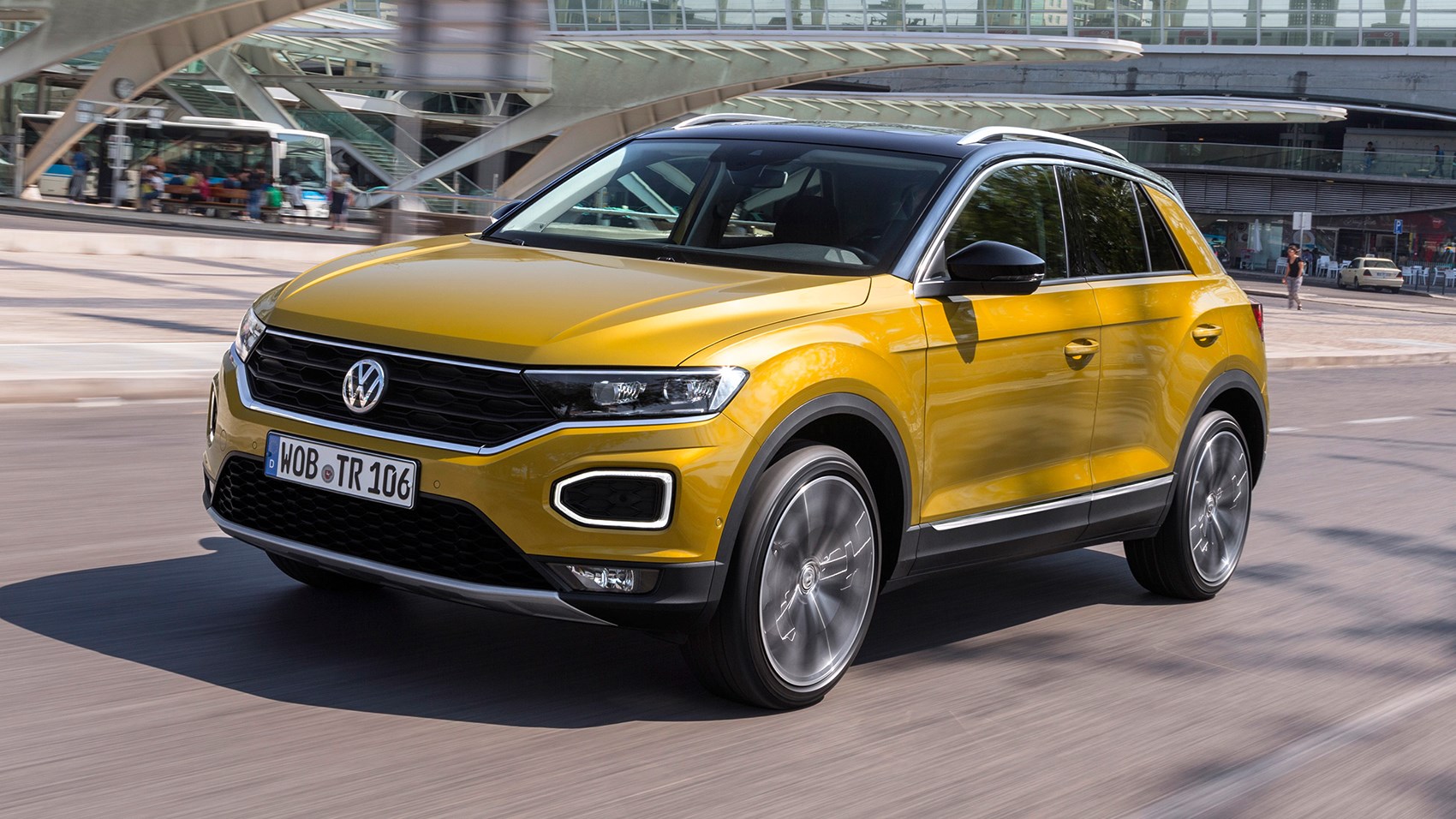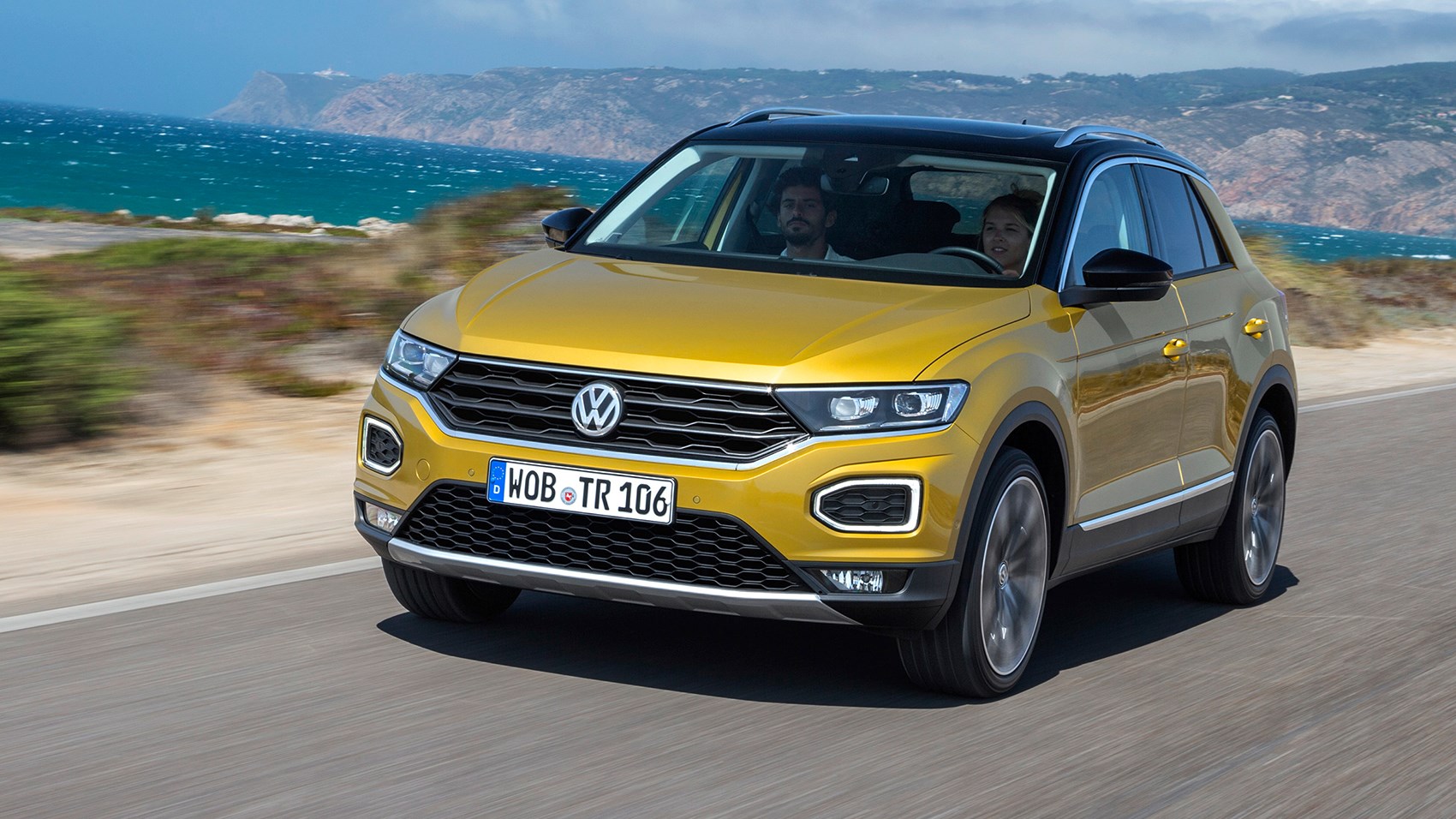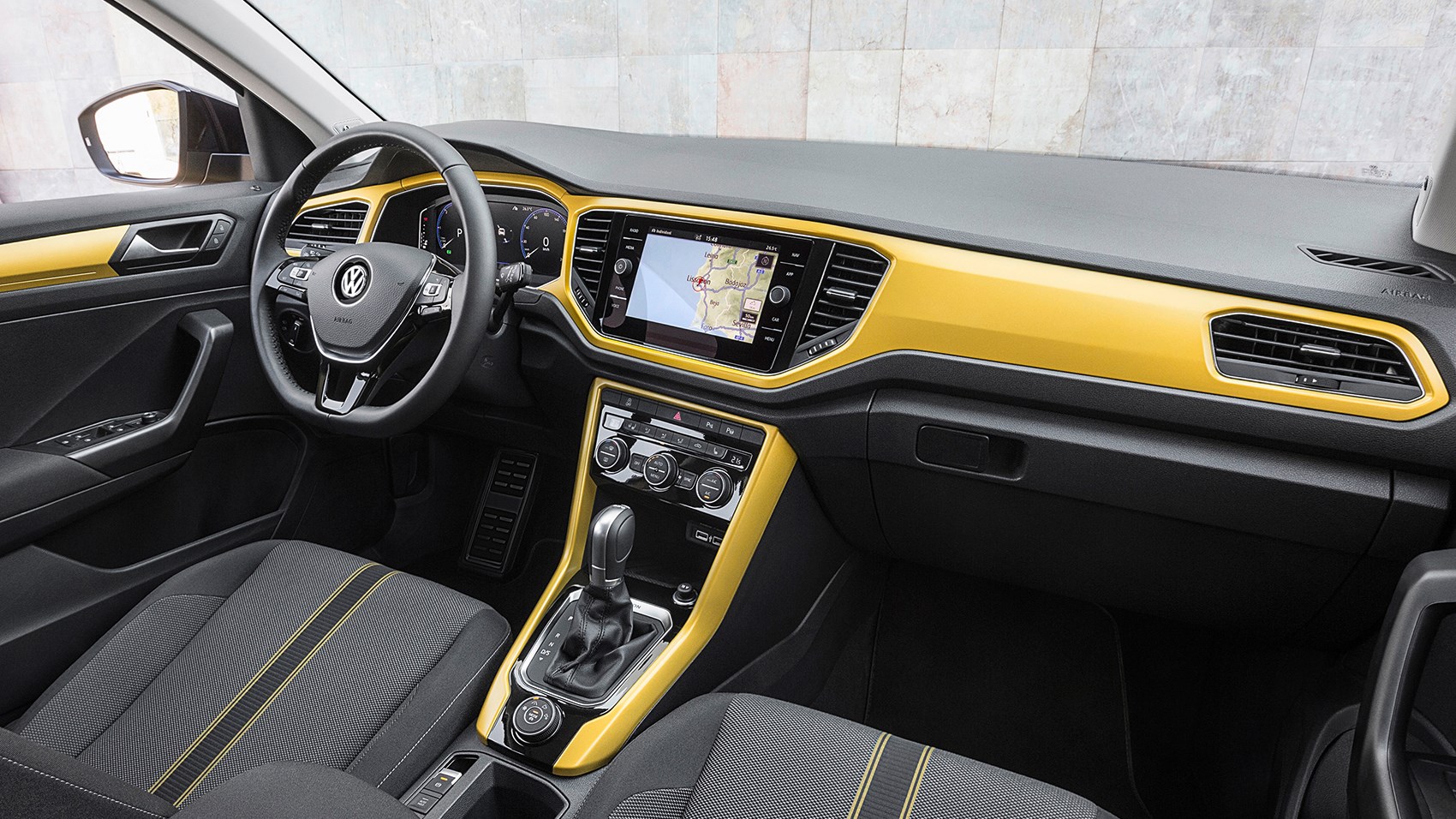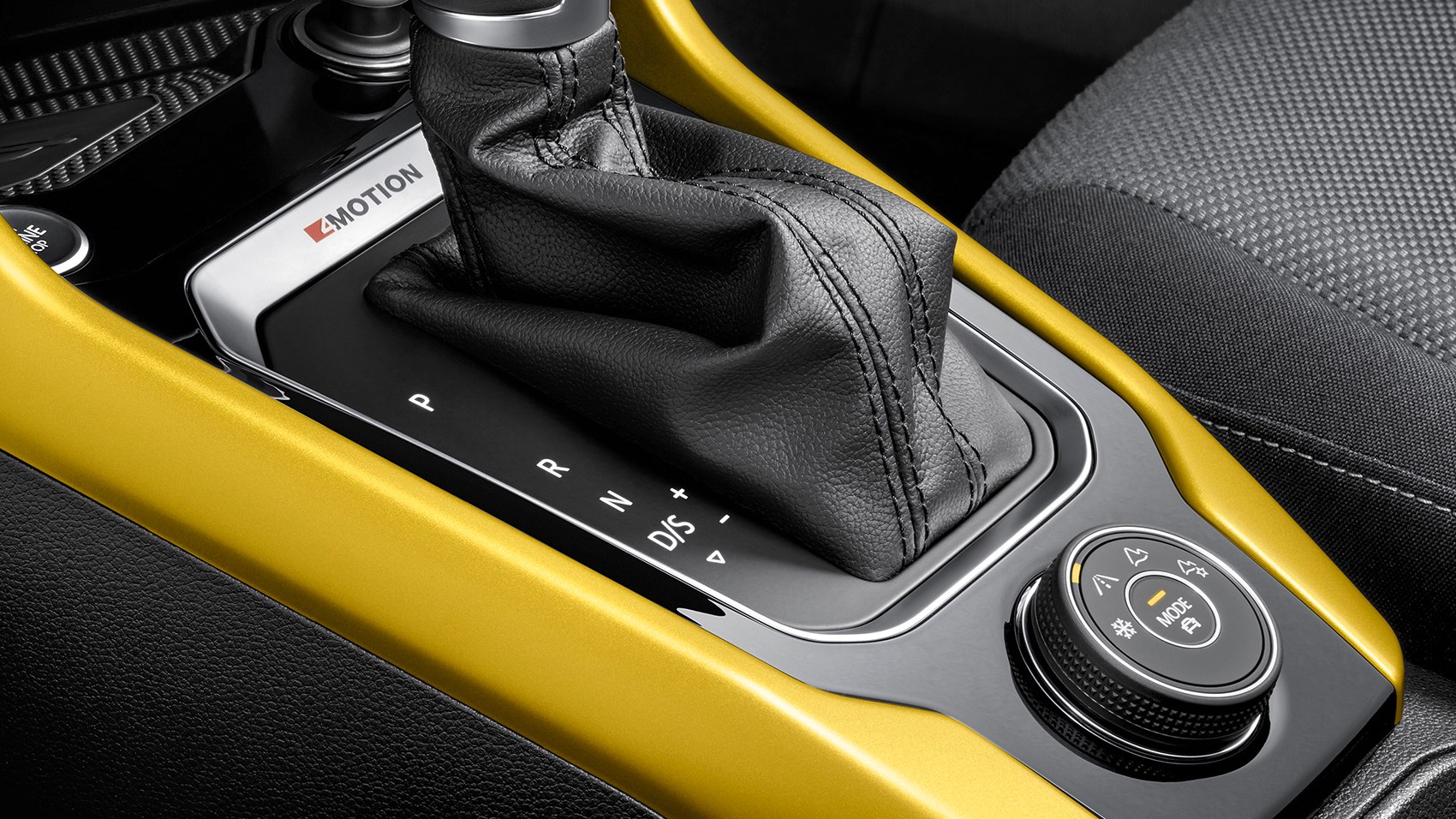► VW T-Roc SUV driven
► We drive high-end petrol and diesel
► Range starts from estimated £19k
It feels like it’s been crossover season in the motoring world for the best part of several years now, and it’s only going to get busier. This chunky and funky thing is VW’s latest effort – the T-Roc.
Volkswagen says that one in three cars sold around the world are now SUVs, and that the T-Roc is just one part of a huge SUV product offensive from Wolfsburg. The T-Roc is designed to sit above the upcoming T-Cross SUV but beneath the larger and more family-friendly Tiguan, with more models still to come. We’ll see a new Touareg in 2018, while the I.D. Crozz is tipped for market launch in 2020.

T-Roc’s dimensions sort of straddle what UK buyers might consider to be a small and mid-size SUV. It’s larger than a Nissan Juke, but smaller than a Qashqai, for example, so actually plotting where this car is in the grand scheme of soft-roaders is a little hard to initially nail down. VW says the T-Roc has rivals ranging from the aforementioned Juke to the Mini Countryman, Vauxhall Mokka X and even another VW Group stablemate, the Audi Q2.
We’ve been for a spin in two different, high-end T-Rocs – check out our findings below.
So what does the T-Roc range look like?
It’s pretty wide-reaching for the UK market. There are five trim levels ranging from austere S right up to racy R-Line trims and a dizzying number of engines to choose from; everything from a weeny 1.0-litre 3-cyl petrol right up to a torquey 2.0-litre TDI diesel.
A six-speed manual or seven-speed DSG ’auto make up your gearbox options, and you can choose from either front- or 4Motion all-wheel drive.
We drove the top-end 187bhp 2.0-litre TSI petrol and 148bhp 2.0-litre TDI models, both equipped with the seven-speed DSG auto and all-wheel drive.

There are five trim levels planned for the UK: S, SE Design, SE L and R-Line, but the European cars we drove were built for the continental market, so we can’t actually tell you which models get what in the UK just yet. What we do know is that VW UK expects the best-selling T-Roc to be the 1.0-litre TSI SE, with the manual ’box and front-wheel drive.
What’s the interior like?
It certainly looks young and hip, at face value at least. VW says one of the main stand-out points of the T-Roc is its personalisation options, so along with the bright exterior colours and two-tone roof options (totalling 24 combos, to be exact), you can choose different interior dashboard colours and seat trims to match that exterior paintwork.
The interior and dashboard is angled quite significantly towards the driver, so the infotainment screen, climate controls and suchlike are angled away from those riding shotgun. Everything you’ll regularly touch (i.e. the climate dials, wheel column stalks etc) feel robust to hand, but the overall dashboard materials feel (and even look) quite tinny and low-rent. The interior is saved by the colourful dash inserts, but there are quite a few areas of the dash that slightly betray VW’s usually decent material quality.

A huge amount of tech is on offer, though. The T-Roc is geared towards the younger end of the buyers’ market, you see, so you can spec everything from the Active Info Display to dynamic chassis control (which features four different road modes and two off-road modes), wireless charging for your smartphone and a huge glut of safety tech.
Is it a decent steer?
During the product presentation, VW made big statements about it being an SUV GTI, or at least ‘the SUV from the inventor of the GTI’. It’s not.
It’s certainly not bad to drive, it’s just that it’s as much an uninvolving, safe pair of hands as… a regular Golf or a Polo, for example. The steering is light but direct, the ride is compliant but got a little fussy with our T-Roc’s big wheels on (frankly rubbish) Portuguese roads and when pushed hard, it resorts to safe, soft understeer.

Our T-Roc models came with the Dynamic Chassis Control system, that’s available through a dial switch below the gear lever on the centre console. Sport mode adds weight but no extra feel to the steering and sharpens up the throttle response and suspension damping, while the Off Road mode holds gears longer and automatically brakes for you down steep rocky descents.
The top-spec TSI petrol is quiet when you’re cruising, but sounds harsh when you give it the beans. It’s the fastest model in the range, with a 0-62mph time of 7.2 seconds. At the other end of the scale, the 148bhp TDI has sufficient grunt for steep hill climbs and quick overtaking manoeuvres, but still manages to sound like a van when you push it.
I’m one part of a young family – is the T-Roc practical?
Yes, actually. Even with a tall driver or front passenger, a tall adult will have enough room in the rear to feel comfortable for longer driving stretches. The cars we drove had armrests with cupholders and separate air vents but, again, there were some quite hollow and scratchy plastics letting the side down.
Boot space with the seats up is measured at 445 litres – more than the T-Roc’s VW Group stablemate, the Q2, and larger than the Mini Countryman. It’s not quite as capacious as a BMW X1, but the baby crossover from Munich is longer and taller than the T-Roc.
Verdict
VW’s ever-expanding SUV family now has a new mouth to feed and we’ve come away with the inescapable feeling that it’ll inevitably sell in the bazillions. The T-Roc has personality and surprisingly handsome looks on its side, is practical enough to appeal to #lifestyle young’uns and small families alike and is packed to the rafters with tech.
It’s not without issues, though. Some of the dashboard materials are iffy and you’ll have to be seriously careful with the options list to get the best value for money. Plus, it’s not what you’d call exciting to drive. But how many crossover buyers really care about that last point?
[Specs quoted are for the 2.0-litre TSI 4MOTION DSG; £19,000 is estimated and yet to be confirmed]